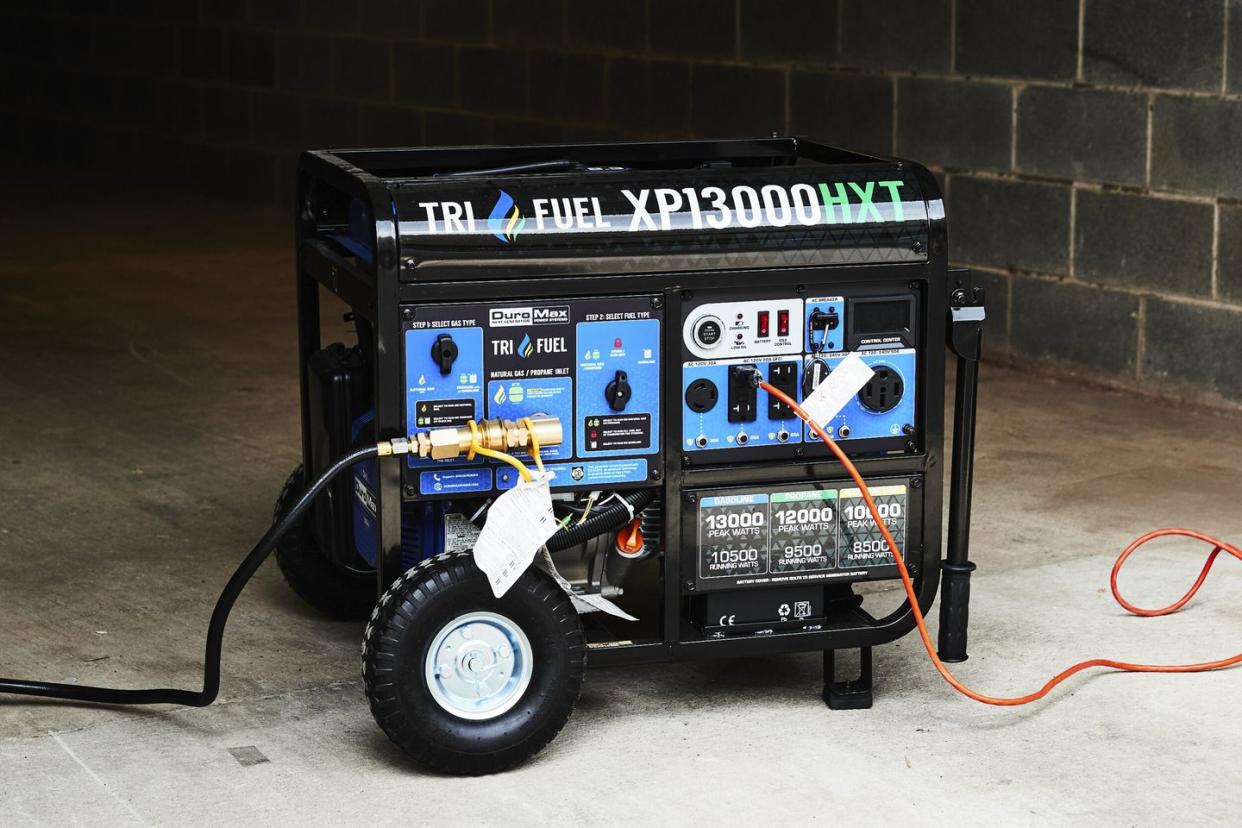Keep Your Your Generator Running With These Top Tips

With a six-month hurricane season on the east coast, an even longer wild fire season in the west, and tornadoes filling the gap in between, generators have become essential equipment for people dealing with power outages. If you rely on one to keep the lights on, the fridge cold, the freezer frozen, and your personal electronics charged up, you’ll need to be sure they’re ready to go when the grid goes down.
Maintenance is key to getting the most out of your investment in a generator—if it won’t start when you need it, there is no point having one. If you have a stand-by system, they typically have automated, monthly test or exercise cycles. While this helps make sure they’re working properly and ready for outages, they should still be serviced annually. This may include changing oil and filters, but you should check with the specific manufacturer for the correct service components and schedules.
Portable Gasoline Generators
While many stand-by systems are powered by propane, most portable generators are powered by gasoline, which is the most commonly available fuel. However, when using generators for emergency power, their infrequent use can present some issues you should consider. The first is that when big, catastrophic storms hit and power outages span days, gas stations may have trouble meeting the demand and there may be long lines.
The second issue has to do with the infrequent use of back-up generators, which may sit for months to years between use. Gasoline sitting in a carburetor will slowly evaporate over time, leaving gummy deposits that can block fuel from getting through, making it difficult or even impossible to start your generator without servicing.
You can avoid this by closing the fuel valve and letting the generator run until it stalls, using up the fuel left in the carburetor. Additionally, over time gasoline can oxidize or go “stale,” losing combustibility. It may also absorb water, which can then corrode fuel tanks and other metal components in the fuel system. Starting a generator regularly, as well as treating fuel with a stabilizer, can help fight these issues.
Ethanol-free gasoline, available at some gas stations, is also less susceptible to degradation over time than standard 87-octane pump gas, though it's still a good idea to mix the fuel going into your generator with fuel stabilizer.
Generators with an electric start feature, have a battery that is used to turn the engine over and start it. Batteries, as they age and sit idle can lose charge, so it’s important to start it often enough, and long enough, to keep the battery charged up.
Portable Dual-Fuel Generators

Dual-fuel generators can run on gasoline or liquified petroleum gas (LPG), commonly known as propane. Switching between the fuels is simple, and you won’t be tied into the availability of one type of fuel.
There is a bigger advantage to propane, though: It is very stable when stored for long periods of time. It won’t go stale, and won’t gum up carburetors from sitting. Plus, some homes that use propane for other purposes may already have large storage tanks on the premises, foregoing the need to make repeated trips out for fuel.
The one downside to propane is that it contains fewer BTUs (British Thermal Units, a measurement of energy) than the same amount of gasoline. So, a generator running on propane will have slightly reduced starting and running watts. On the plus side, though, it will also run a little quieter than those that run on gasoline.
While they are few and far between, you may also find generators that run on natural gas. There are also propane-powered generators that can be converted to run natural gas.
Take These Steps to Keep Your Generator in Top Working Order:
For gas Generators: Use ethanol-free gas treated with fuel stabilizer, and keep the tank full when not in use. Also keep a gas can full of stabilized fuel on hand during you peak disaster season.
For propane generators: Keep a full 20 to 40 pound propane tank on hand during peak disaster season.Start your generator regularly: Set a reminder on a calendar app to start/test your generator every 1 to 3 months. Let it run for 15-20 minutes with a load plugged into it—something like an air conditioner or portable electric heater. Be sure to turn the fuel off and let it shut down on its own, to use all the fuel in the fuel system.
Annual service: Check the oil, and add if low, or replace if dirty or black. If your generator has an hour meter the oil should be replaced every 100 to 200 hours. Check the air filter and replace if obviously dirty. Air filters should be replaced every 300-400 hours. Check your owner’s manual for the recommended service intervals.
You Might Also Like
